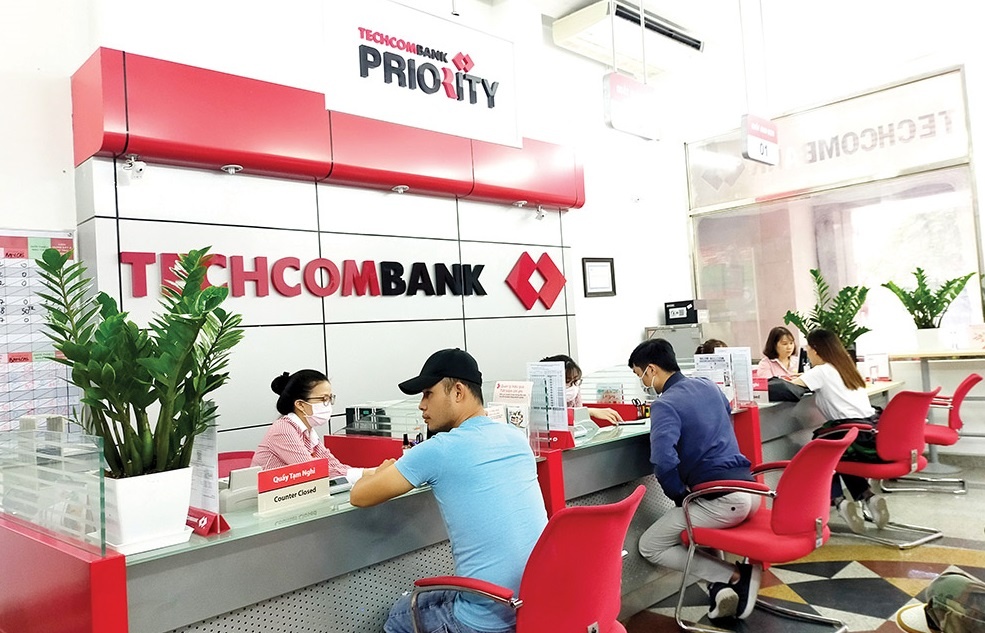Credit demand typically surges towards year-end. How do you think this trend might affect interest rates and bank liquidity?
 |
| Nguyen Duc Huy, sector lead analyst of Ratings & Research at VIS Rating |
We expect deposit interest rates to keep rising in the final months of the year as lending expands. Competition for deposits will intensify, and smaller banks with limited liquidity and dependence on short-term funding will face greater pressure from rising costs.
Deposit rates have recently increased due to surging credit demand and faster public investment disbursement, while deposit growth remains slow. By end-July 2025, credit had grown 10.2 per cent from end-2024, far exceeding deposit growth of 6.7 per cent. Data from 27 listed banks show the loan-to-deposit ratio (LDR) climbed from 106 per cent at end-2024 to 109 per cent by June, marking the highest level in five years.
Liquidity shortages also stem from large cash withdrawals into Vietnam State Treasury (VST) accounts amid strong budget revenue growth. The General Statistics Office reported total budget revenue of $77.04 billion in the first nine months, up 30.5 per cent on-year.
Between late June and late October, banks raised deposit rates and introduced incentives to attract funds. State-owned banks like Vietinbank lifted online savings rates for terms under 12 months by 0.3-1 per cent per year. Major private banks raised rates by 0.1-0.8 per cent, with Techcombank offering up to 1 per cent extra for Private or Priority clients. Smaller banks followed, increasing rates by 0.1-0.35 per cent for short terms. In the interbank market, average overnight rates in October rose about 0.5 percentage points compared with the first half of the year.
Several state-owned and major private banks are pursuing above-average credit growth, pushing LDR higher. However, this group remains resilient to funding cost pressures thanks to extensive branch networks, advanced digital platforms, and a strong base of low-cost current account and savings account (CASA) deposits that support liquidity stability.
Which monetary policy tool is the State Bank of Vietnam (SBV) using most effectively to maintain liquidity stability?
The SBV has actively utilised open market operations (OMO) to support liquidity, with outstanding volume on the collateral channel reaching $9,240 billion by the end of October through short-term tenors, marking the highest level since January 2017. In addition, deposits from the VST at commercial banks also serve as an important channel to support system-wide liquidity. As of the end of June 2025, the size of VST deposits at banks reached $14.56 billion, up 15 per cent on-year. These short-term support tools help meet liquidity needs in a timely manner and enable banks to access low-cost funding, thereby facilitating lending rate reductions in line with government policy direction.
However, the use of OMO tools has also been managed more cautiously at certain times, especially when exchange rate pressures rise. For example, the SBV absorbed a large volume of liquidity through treasury bills in early July and slowed the pace of money injection via OMO in the second half of September to avoid adding pressure on the exchange rate.
Therefore, banks need to proactively diversify funding sources and strengthen core deposits, particularly by boosting medium- and long-term funding and low-cost CASA deposits to reduce reliance on the short-term interbank market, which is prone to volatility during periods of market stress, and to reinforce a more stable liquidity foundation.
What does the rise in non-performing loans over the first nine months of the year indicate about current credit quality, and in your opinion, how is this trend affecting overall system liquidity?
We expect the sector’s problem loan formation to keep declining as borrowers’ repayment capacity improves in a stronger operating environment. This trend is supported by accelerated public investment and ongoing government efforts to address legal bottlenecks in key sectors such as real estate and energy. Individual borrowers are also regaining financial stability as income from business and employment recovers and property values rebound.
The codification of Resolution 42 has restored banks’ right to seize collateral assets, enabling faster non-performing loan (NPL) recovery and enhancing asset quality and profitability. This right encourages borrowers to repay and expedites debt resolution. However, small and mid-sized banks with exposure to resort, or speculative real estate may continue to face challenges due to market oversupply and cautious sentiment.
Sector-wide, the NPL ratio fell by 20 basis points from the previous quarter to 2.3 per cent in the first half of 2025, reflecting stronger repayment capacity among corporate clients and fewer overdue retail mortgages after legal obstacles were cleared. Many large banks also reported slower NPL formation in their nine-month results, with credit quality improving across both individual and corporate segments.
As bad debts decline, banks can recover principal and interest more promptly, resulting in steadier cash inflows and stronger capacity to support new lending.
When a portion of capital is locked in non-performing loans, what key factors or solutions help the system maintain stable liquidity?
We believe banks’ efforts to strengthen medium- and long-term funding through bond issuance, international borrowing, and improved low-cost CASA deposits will help diversify funding sources and maintain stable liquidity.
As public investment accelerates, foreign investment remains resilient, and trade surpluses expand, medium- and long-term credit demand is rising amid progress in resolving legal delays. Bond issuance allows banks to secure longer-term funding and reduce reliance on short-term interbank sources. In the first nine months of 2025, total bank-issued bonds reached $12.28 billion, up 35 per cent on-year, largely driven by major banks pursuing strong credit growth.
Banks are also tapping international markets to meet long-term capital needs. VPBank raised $1.35 billion in syndicated loans with 3–5-year tenors between May and August, while HDBank secured a $215 million syndicated loan in July from Sumitomo Mitsui Banking Corporation, Development Finance Institute Canada, and the Japan International Cooperation Agency.
In terms of CASA deposits, many banks rated by VIS Rating are implementing comprehensive strategies to draw in both individual and corporate clients. For affluent individuals, banks have launched specialised products and upgraded digital and omnichannel platforms to enhance user experience. For small- and medium-sized enterprises and large firms, they are expanding payroll, pension, and cash management services. Partnerships with e-wallets such as Viettel Pay, Zalo Pay, and Momo have further improved access to transaction flows, boosting CASA mobilisation efficiency.
 | Banks resume cash dividends as financial health rebounds Several banks have resumed cash dividend payments, signalling a rebound in financial health after years of restrictions, with total disbursements reaching nearly $1.7 billion so far this year. |
 | Banks set to boost capital and reward shareholders Several Vietnamese banks are moving to boost their charter capital through share dividend distributions, aiming to reinforce financial strength and competitiveness while still rewarding shareholders with cash payouts. |
 | Banks racing into year-end profit boom Vietnam’s banking sector continues to post robust profit growth this year thus far, with numerous lenders reporting impressive earnings and setting new records. |



















































